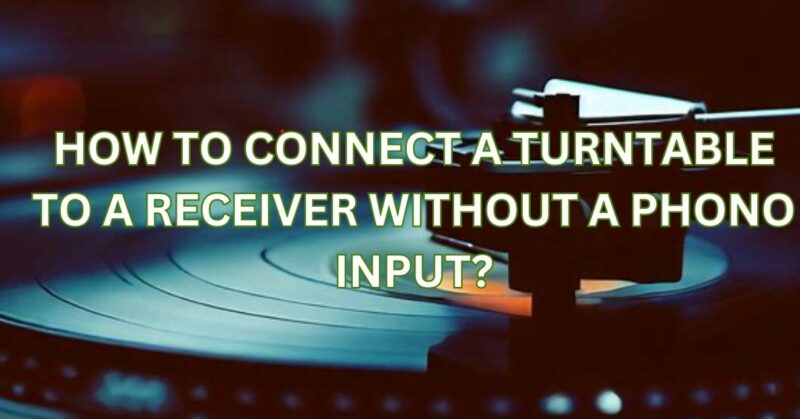Connecting a turntable to a receiver without a dedicated phono input might seem challenging at first, but fear not! With the right equipment and a little know-how, you can enjoy your vinyl collection without investing in a new receiver. In this article, we’ll guide you through the process of connecting a turntable to a receiver that lacks a phono input, ensuring you can enjoy the warm, nostalgic sound of vinyl through your existing audio setup.
Understanding the Phono Input
Before diving into the connection process, let’s understand the purpose of a phono input. Turntables produce a low-level signal that needs to be equalized and amplified to match the line-level signal typically accepted by audio receivers. The phono input on a receiver contains a built-in phono preamplifier (or phono stage) that performs this task.
Option 1: Using a Phono Preamplifier
The simplest solution to connect a turntable without a phono input is to use an external phono preamplifier. Follow these steps:
- Research and purchase a standalone phono preamplifier suitable for your turntable’s cartridge type (moving magnet or moving coil).
- Connect the turntable’s RCA output cables to the corresponding inputs on the phono preamplifier.
- Use RCA cables to connect the preamplifier’s output to an available line-level input on your receiver (e.g., auxiliary or CD input).
- Set the preamplifier’s gain and impedance settings according to the manufacturer’s instructions.
- Power on the turntable, preamplifier, and receiver to ensure a proper connection.
- Select the input on your receiver that corresponds to the connected line-level input.
Option 2: Using a Turntable with a Built-in Preamp
Another alternative is to use a turntable that includes a built-in preamp. Here’s how to proceed:
- Check if your turntable has a switch or button to enable the built-in preamp. If not, skip to the next step.
- Connect the turntable’s RCA output cables directly to any available line-level input on your receiver.
- Power on the turntable and the receiver.
- Select the input on your receiver corresponding to the connected line-level input.
- If your turntable has a switch or button to enable the built-in preamp, ensure it is turned on.
Option 3: Using a Phono Preamp with USB Output
If you have a computer or a compatible audio interface, you can use a phono preamplifier with a USB output. Follow these steps:
- 1. Acquire a phono preamplifier with a USB output, designed to connect to a computer or audio interface.
- Connect the turntable’s RCA output cables to the corresponding inputs on the phono preamplifier.
- Connect the phono preamplifier to your computer or audio interface using a USB cable.
- Install any necessary drivers or software for the USB device.
- Configure your computer or audio interface to recognize the USB input and route the audio to your receiver or speakers.
Connecting a turntable to a receiver without a phono input might require some additional equipment, but it is a straightforward process. Whether you choose to use an external phono preamplifier, a turntable with a built-in preamp, or a phono preamp with USB output, these methods ensure you can enjoy your vinyl collection with excellent sound quality. Remember to carefully follow the instructions provided by the manufacturers for proper setup and adjustment of the equipment.
By successfully connecting your turntable to a receiver without a phono input, you can relish the rich, analog sound that vinyl records offer. Embrace the warmth, depth, and nostalgia of your favorite albums, and immerse yourself in the timeless experience of vinyl playback.
Additionally, keep in mind that some older receivers may have a “phono” input label but lack a built-in preamp. In such cases, using an external phono preamplifier is still necessary to ensure optimal sound quality.
Lastly, don’t forget to maintain and care for your turntable and vinyl collection. Keep the turntable clean and dust-free, and handle your records with care to preserve their quality and longevity.
In conclusion, connecting a turntable to a receiver without a dedicated phono input is entirely achievable with the right equipment and a basic understanding of the process. By following the steps outlined in this guide, you can enjoy the pleasure of vinyl playback while utilizing your existing audio setup. So, gather your favorite albums, set up your turntable, and let the music take you on a journey through time. Happy listening!

